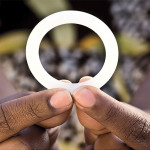In 2019, the United States met its goals for the elimination of HIV among newborns for the first time, according to a recent report in the journal Pediatrics. Although it has not yet reached zero, the likelihood of mother-to-child transmission fell below 1%, and the perinatal HIV diagnosis rate dropped below one case per 100,000 live births.
Pregnant women living with HIV can transmit the virus to their babies, but effective antiretroviral treatment dramatically reduces the risk. Modern antiretroviral therapy that leads to full viral suppression makes transmission virtually impossible, but the risk remains high if women are not diagnosed with HIV until late in pregnancy. Elimination of perinatal HIV therefore requires universal testing during pregnancy and treatment for those who test positive.
Researchers with the Centers for Disease Control and Prevention assessed perinatally acquired HIV among babies born in the United States between 2010 and 2019. The annual estimated number of live births to women diagnosed with HIV decreased from 4,587 in 2010 to 3,525 in 2019, while the number of infants with perinatally acquired HIV dropped from 74 to 32—down from a peak of more than 1,500 per year in the early 1990s. The perinatal HIV transmission rate fell from 1.6% to 0.9%, and the annual perinatal diagnosis rate declined from 1.9 to 0.9 cases per 100,000 live births. Racial and ethnic disparities persist, but they declined substantially over the 10-year study period.
“These laudable accomplishments have been made possible through the decades-long coordinated multidisciplinary and multisectoral efforts of HIV research, public health agencies and advocacy communities,” Nahida Chakhtoura, MD, and Bill Kapogiannis, MD, of the National Institutes of Health, wrote in an accompanying editorial.







Comments
Comments